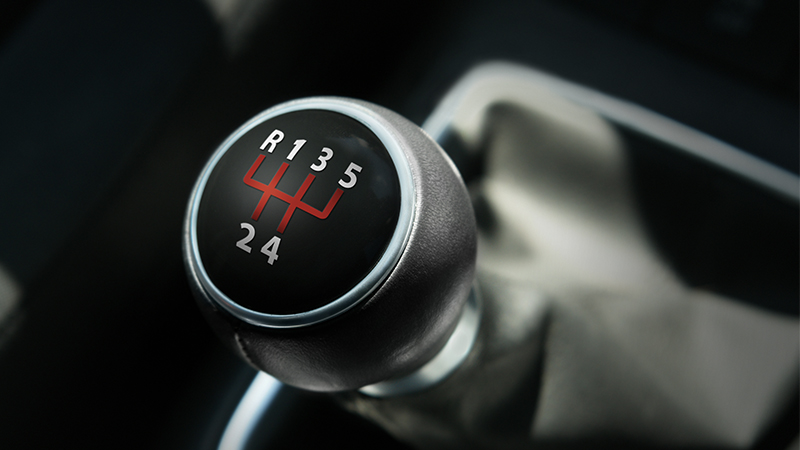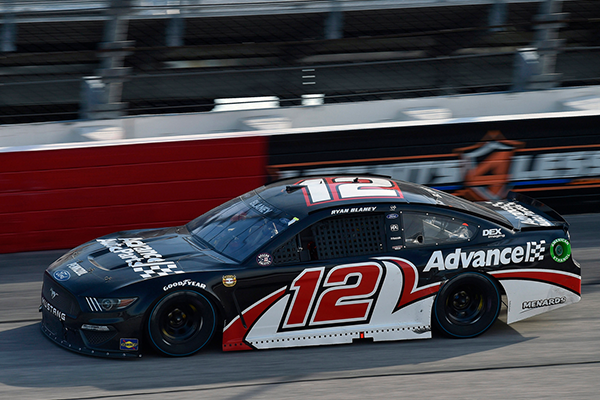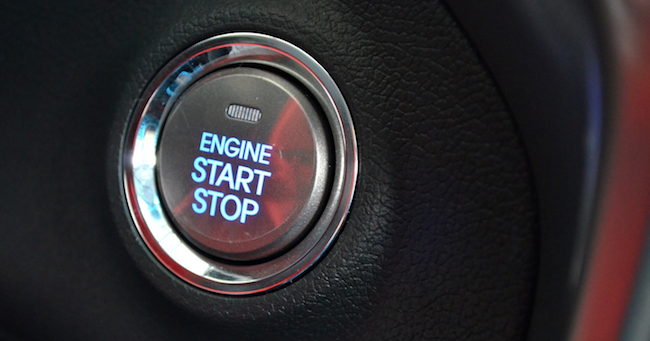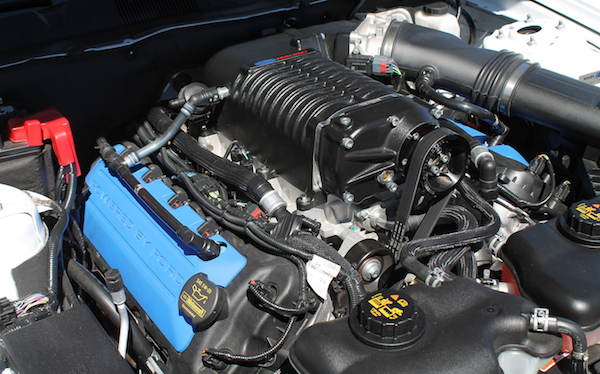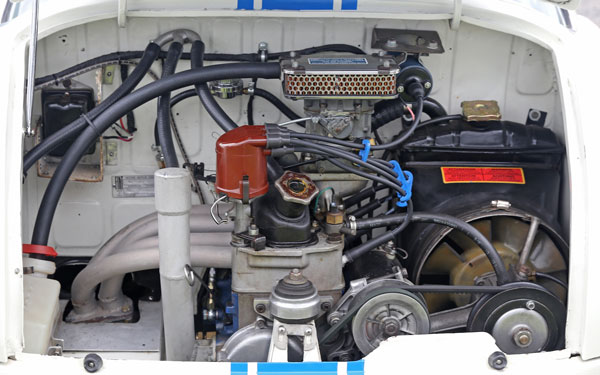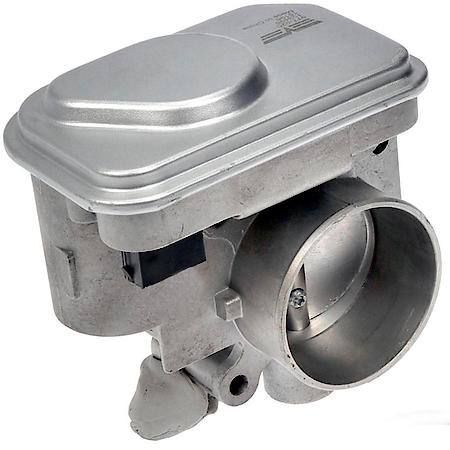In August 2013, only 3.9 percent of new cars sold to date that year came with manual transmission. Were those the last gasping breaths of an archaic technology? Maybe. Or, maybe not.
The reality is, the death of the stick shift has been predicted for a long time, at least as far back as September 1965 when Playboy published an article with a two-page picture of a Corvette covered in cobwebs and this text: "Bye-Bye Stick Shift." The prediction made by the well-respected automotive journalist Ken Purdy was that the stick shift was going to become nothing more than a “purist’s plaything.”
Going, going...still here
Nearly 50 years later, of course, the stick shift is still here, although many experts agree that it’s on its death rattle. According to the Business Insider in December 2014, manual transmission is finally on its way out (but they nevertheless offer driving tips for those who want to get in on the tail end). Meanwhile, an article in U.S. News called stick shift fans a “dying breed,” citing that, 20 years ago, a full quarter of cars sold had manual transmission. They predict the complete demise of manual transmission in 15 to 20 years, with perhaps a few models hanging on for nostalgia purposes.
Other signs pointing to stick shift transmission going away include newer options such as TC-SST, CVT and more, described in more detail later on. Plus, as hybrid and electric cars increase in popularity, that automatically creates less of a market share for the stick since, according to an Edmunds.com expert, only one hybrid – the Honda CR-Z – comes with a shift stick option. Cut and dried case for the end of manual transmission? Not necessarily.
In an article published in January 2013, the New York Daily News says that 6.5% of the cars in the United States sold (presumably in 2012) were manual, adding that “stick shifts are making a comeback thanks to their inherent fuel efficiency and performance advantages.” USA Today echoes the sentiment, saying that “Americans have a growing crush on manual transmission,” with 2012 seeing the most stick shift sales since 2006. So, what’s the story? Is the stick shift going the way of the dinosaur? Or will nostalgia and the demands of diehard fans keep them alive? We at Advance Auto Parts decided to take a deeper look.
Invention of the modern manual transmission
Credit is typically given to French inventors Louis-Rene Panhard and Emile Levassor who demonstrated their three-speed transmission product in 1894. These men owned a woodworking machinery business and they became intrigued with automobiles. They built their first car in 1890, those with a “pedal-operated clutch, a chain transmission leading to a change-speed gear box, and a front radiator.” They were the first to move the engine to the front of the car and, in 1895, their transmission was used in their automobiles.
In 1898, Louis Renault “substituted a drive shaft for the drive chain and added a differential axle for the rear wheels to improve performance of the manual transmission.” The next change of significance was in 1928 when Cadillac introduced the synchronized system that made shifting smoother and easier. Although car manufacturers had been experimenting with automatic transmission since 1904, a clutch-less system wasn’t available until 1938 (the Hydra-Matic) and the first modern automatic transmission wasn’t available until 1948: Buick’s Dynaflow.
Advantages and disadvantages of the manual
We have gathered wisdom from numerous sources and experts: 
Alex Glenn suspects that fewer manual transmission drivers text and drive, because the stick shift demands your full attention. Although we’ve never seen data on that, it sure makes sense. Meanwhile, Jalopnik believes that stick shift drivers:
- Have a better understanding of their cars (We agree.)
- Don't have to loan their car out (Sorry! It's stick!)
- Can become a better car thief (It's a joke, people!)
- Can more easily escape if "chased by terrifying aliens that want to abduct and probe you" and when the only escape route is a stick shift car (Boy. That’s scary. We sure hope it's a joke.)
Stick shift myths
Edmunds.com lists five myths associated with stick shifts and we’d like to focus on the first one: that cars with manual transmissions ALWAYS get better fuel economy than automatics. In the past, that was largely true. But, it’s definitely not 100% true anymore.
An example provided was the 2014 Ford Focus, where the six-speed automatic gets 31 mpg (27 city/37 highway), which can be raised to 33 mpg (28 city/40 highway) if you purchase the Super Fuel Economy option package. Meanwhile, the manual version gets 30 mpg (26 city/36 highway). Read the article for more examples where automatics are making significant inroads on fuel economy, sometimes surpassing the manual standbys. In the article, you can also discover how manual=cheaper isn’t always true any longer.
And, we’d like to highlight one advantage of stick shifts that may be true or may be a myth. The jury is still out. And that’s whether or not stick shift cars are stolen less often. Of course, in sheer numbers, fewer are, because fewer of them exist and fewer car thieves know how to drive them. And, here’s what Frank Scafidi, director of public affairs for the National Insurance Crime Bureau, says. “Some thieves might be thwarted in their attempt to steal a car with a manual transmission, since many thieves possess varying levels of intellect. That very personal element is also a factor in the degree of expertise necessary to overcome some of the more sophisticated security systems. Most car thieves are just not that swift and therefore resort to stealing older, easier targets. But there are those in the car thief ranks who are quite capable of making off with anything that they intend to steal.”
Now let’s see what Consumer Reports has to say about saving money by going manual. In their testing, published in October 2014, they’ve discovered that, in some cars, manual transmission can improve gas mileage by 2 to 5 mpg and the cars themselves can be $800 to $1,200 cheaper. Plus, manual transmission can improve acceleration, a real boon for small engines. They also acknowledge, though, that some six-speed automatics are now surpassing the manual models, such as the Chevrolet Sonic. Most importantly, here is their “Bottom line: Most manual transmissions can deliver better fuel economy and acceleration. But shift quality and fuel economy vary, so check our ratings and try before you buy.”
Finally, here are some more modern developments.
Twin Clutch Sportronic Shift Transmission (TC-SST)
This is the brand name of a six-speed dual clutch transmission system that first appeared in the 2007 Lancer Evolution X. TC-SST allows a driver to go through the clutch/gear shifts more quickly than what’s possible in traditional manual transmission, an automatic transmission with a torque converter or a single clutch automated manual transmission. There is no drop off in engine power, which equals increased performance AND better fuel economy. This offers a smoother ride than automatics and the system can select two gears simultaneously, putting the odd and even gears on separate shafts both using the same clutch. Here is what one TC-SST convert has to say about the options available with the new system, one that “feels like a manual” but can shift gears for you when you’re feeling “too lazy” to do it yourself. https://www.youtube.com/watch?v=BZrM3oTjPs8
Continuously Variable Transmission (CVT)
At its core, the CVT is a flexible system that has an “infinite number of effect gear ratios between maximum and minimum values.” This is in direct contract with traditional transmissions that have a fixed/limited number of gear ratios. Find more in-depth information about CVTs here. We want to know what you think!
Are you a fan of the stick? Do you think it will ever really go away? Share your thoughts below!
